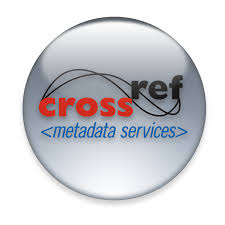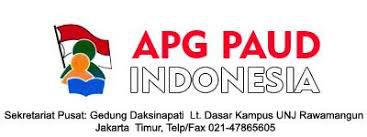Teaching English for Young Learners (Early Childhood) in Kamal’s Kindergarten
Abstract
This study aims to determine effective methods for early childhood English learning. The sample of the research is consisted of 35 kindergarten children aged 4-5-6, who do not speak English and have no linguistic or speaking problems. The sample of the research consisted of six girls and seven boys aged 4, five girls and six boys aged 5, and seven girls and four boys aged 6. None of the children in the sample of research has had English education before. English language education in early childhood is of great importance since it makes children realize different languages and grow up with a positive attitude for English. Because of this reason, the most effective educational environment must be prepared for obtaining the most effective performance in English language education. The instructor needs to have adequate knowledge and background for the English language education and formation on early childhood. One of the most important facts about children’s learning a second language is the usage of that second language actively in the children’s environment. Such as the one in this study, many schools give English language education. Nevertheless, children can forget what they have learned since they are not using the second language actively in the daily life.
Keywords
Full Text:
PDFReferences
Aukrust, V.G. (2007). Young children acquiring second language vocabulary in preschool group time: does amount, diversity, and discourse complexity of teacher talk matter?. Journal of Research in Childhood Education, 22 (1), 17-37. https://doi.org/10.1080/02568540709594610
Bikçentayev, V. R. (2006). Foreign Language Education to Children at a Very Early Age. www.dilokulu.com/makale 16.04.2006’da alındı.
Çetinkaya, T. (2003). Look at that English speaker!. www.zaman.com.tr No: 458. 08.01.2005’te alındı.
Chen, K.Y; Wen-Jie; Cai. (2019). The Design and Implementation of the English Pronunciation Education Device. International Journal of Emerging Issues in Early Childhood Education, 1 (1), 28-32. https://doi.org/10.31098/ijeiece.v1i1.42
Choi N, Kang S, Sheo J. (2020). Children’s Interest in Learning English Through Picture Books in an EFL Context: The Effects of Parent–Child Interaction and Digital Pen Use. Education Sciences, 10(2), 40. https://doi.org/10.3390/educsci10020040
Clarke, P. (1992). English as a second language in early childhood. Victoria. Free Kindergarten Association Multicultural Resource Centre.
Clarke, P. (2009). Supporting Children Learning English as a Second Language in the Early Years (birth to six years). Victorian Curriculum and Assessment Authority.
Copland, F., Garton, S., & Burns, A. (2014). Challenges in teaching English to young learners: Global perspectives and local realities. Tesol quarterly, 48(4), 738-762. https://doi.org/10.1002/tesq.148
Eliason, C., Jenkins, L. (2003). A Practical Guide to Early Childhood Curriculum. Merrill.
González & Polledo. (2019). The Use of Songs as a Strategy to Teach English Vocabulary to Young Children. Teachers' Professional Development, Volume 21, Issue 2.
Hoy, W.K & Adams, C.M (2016). Quantitative Research in Education: A Primer. Sage Publications, Inc.
Hwang & Liu. (2011). The Impact of Online Games on English Vocabulary Learning among Middle School Students. British Journal of Educational Technology, Volume 42, Issue 1.
Jones, N. B. (1976). Ethological Studies of Child Behavior. Cambridge University Press.
Karacan, E. (2000). Factors Affecting Language Development in Children. Continuing Medical Education Magazine. http://www.ttb.org.tr/ STED/sted0700/6.html.08.01.2005’te alındı.
Lake, V. E., & Pappamihiel, N. E. (2003). Effective practices and principles to support English language learners in the early childhood classroom. Childhood Education, 79(4), 200-203.
https://doi.org/10.1080/00094056.2003.10521193.
Lee, Seulki. (2021). An Analysis of English Textbooks for Young Learners. Journal of English Language and Literature, Volume 67, Issue 3.
Oflaz, M. (2011). The effect of right and left brain dominance in language learning. Procedia Social and Behavioral Sciences, 15, 1507-1513. https://doi.org/10.1016/j.sbspro.2011.03.320.
Rania & Kouider. (2021). Young Learners’ Oral Communication Development through Collaborative Learning Activities in English as a Foreign Language Context. International Journal of English Linguistics, Volume 11, Issue 4.
Robertson, P. (2002). The critical age hypothesis. A critique of research methodology. The Asian EFL Journal, 4(1). https://asian-efl-journal.com/main-editions-new/the-critical-age-hypothesis-a-critique-of-research-methodology/index.htm
Samad, F & Tidore, N. 2015. Strategi Pembelajaran Bahasa Inggris Yang Menyenangkan Untuk Anak Usia Dini. Jurnal Ilmiah Cahaya PAUD, 1(2), 47-57. http://dx.doi.org/10.33387/cp.v2i1.226
Shintani, N. (2018). The Role of Input and Interaction in Young Children’s L2 English Acquisition. Language Teaching Research, Volume 22, Issue 6.
Sumarni, S; Vianty, M; Andika, W.D. (2022). Readiness to Learn English for Early Childhood. Jurnal Obsesi: Jurnal Pendidikan Anak Usia Dini, 6(3), 1480-1492. https://doi.org/10.31004/obsesi.v6i3.1805
Taheri & Shokrpour. (2018). The Effects of Storytelling on Vocabulary Acquisition, Reading Comprehension, and Attitudes of Iranian EFL Young Learners. Theory and Practice in Language Studies, 8(3).
Ting. (2016). Effects of Drama Activities on English Language Learning and Motivation for Young Learners. Journal of Education and Practice, 7(16).
Unyah. S & Kefeli. (2017). The Effectiveness of Interactive Media on English Vocabulary Acquisition among Primary School Children. International Journal of Interactive Digital Media, 5(3).
Wang and Li. (2017). Teaching English to Young Learners through Mobile Devices: A Literature Review. Journal of Educational Technology Development and Exchange, 10, (1).
Wheeler. (2020). National Education Council: Reports, Interviews, Decisions. National Education Printing House.
Zhao, A.H. & Morgan, C. (2004). Consideration of age in L2 attainment-children, adolescents and adults. The Asian EFL Journal, 6(4).
DOI: https://doi.org/10.21107/pgpaudtrunojoyo.v10i1.18648
Refbacks
- There are currently no refbacks.
Copyright (c) 2023 Ulvia Ika Surya, Zakiyatul Mufidah

This work is licensed under a Creative Commons Attribution 4.0 International License.
Diterbitkan oleh:

Program Studi Pendidikan Guru Pendidikan Anak Usia Dini, Fakultas Ilmu Pendidikan
Universitas Trunojoyo Madura.
Jl. Raya Telang PO BOX 2 Kamal, Bangkalan, Jawa Timur 69162
Telp. (031)3014239/ Fax. (031)3011506









